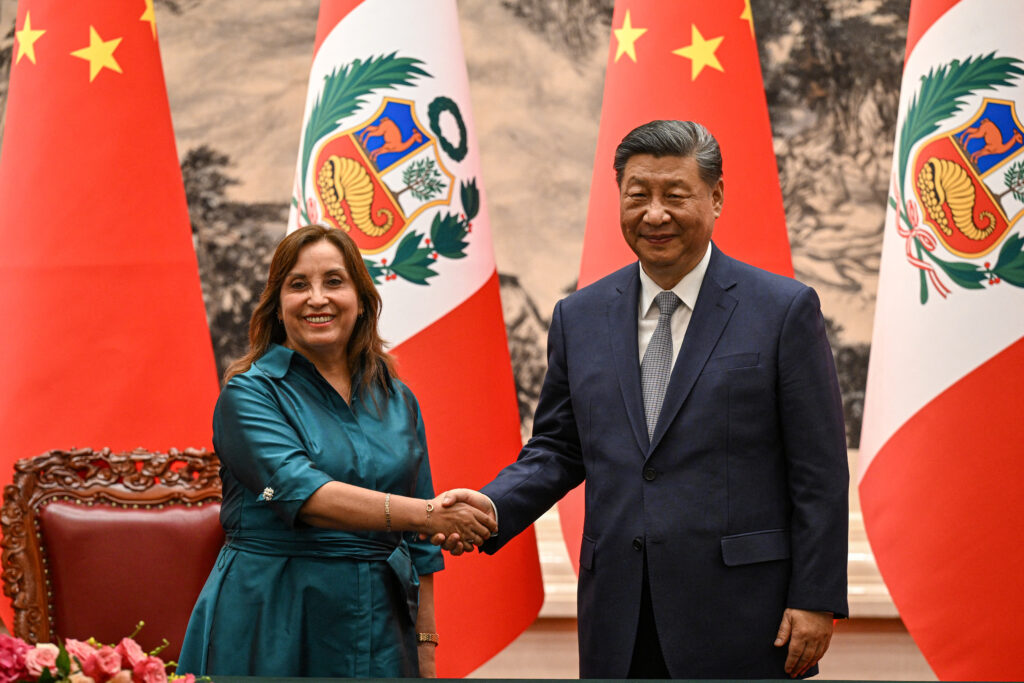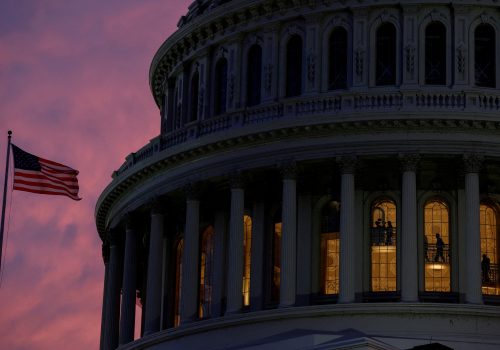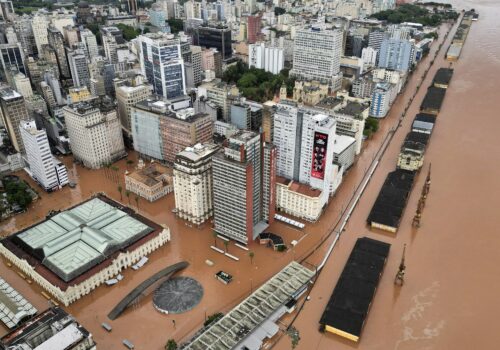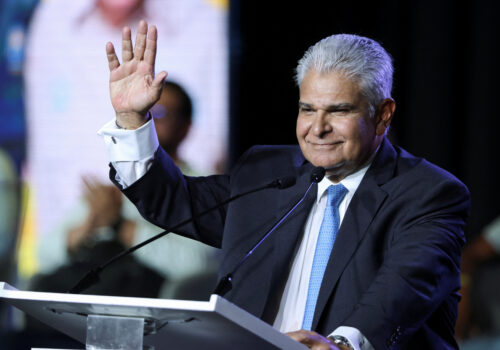On Friday, Peruvian President Dina Boluarte concluded her state visit to China by meeting with Chinese leader Xi Jinping. Accompanied by five ministers, she also met with other top Chinese officials, including Premier Li Qiang and top legislator Zhao Leji. In addition to political discussions, Boluarte met with business leaders from Huawei, BYD, China Southern Power Grid, and COSCO Shipping. This visit, highlighting China’s deepening economic ties with Latin America, contrasts with the United States’ limited economic engagement with Peru. This contrast is underscored by the White House’s decision not to invite Boluarte for a bilateral meeting during her last visit to Washington in November 2023. Given the limited recent US engagement with Peru and deepening ties between Lima and Beijing, Boluarte’s state visit to China should serve as an alarm bell for US policymakers.
The success of Chinese economic diplomacy in Peru
In 2024, Peru’s relevance to China will be transformed, as Lima becomes a crucial partner in China’s economic engagement with Latin America. In November, Xi plans to inaugurate the Chancay port, a $3.6 billion deep-water mega-port forty-four miles north of Lima under exclusive operating rights by China’s state-owned COSCO. The port is set to reshape global trade between Asia and Latin America, reducing the travel time for shipping vessels between both countries by ten days. COSCO’s exclusivity over the port would make Chancay China’s first logistics hub in South America. Similarly, China Southern Power Grid’s ongoing acquisition of Italian Enel’s equity stakes in Lima’s electricity distribution will put 100 percent of Lima’s electricity in the hands of Chinese companies.
Beyond these two projects, Boluarte’s state visit to China follows a decade of increased Chinese economic influence in the Andean country. Between 2018 and 2023, Peru became the second highest recipient of Chinese foreign direct investment (FDI) in Latin America and the Caribbean, and the largest recipient of Chinese FDI in South America, standardized by gross domestic product.
Chinese investment has grown in Peru despite its political instability. From 2016 onward, the country has been entangled in an institutional and political crisis. With six presidents governing the country since 2016, Peru has been hardly able to offer any political stability to investors. As Chinese companies’ interests increase in an institutionally weaker Peru, it becomes essential for the Chinese government to secure support at the highest political level to shield its strategic investments from this instability. The state visit provides an example: In the months preceding the visit, both the Chancay port and China Southern Power Grid’s acquisition were scrutinized by Peru’s port and antitrust authorities, respectively. The National Port Authority even revoked COSCO’s exclusivity deal, which threatened to stymie China’s control over the port.
But after months of legal disputes, and upon the announcement of Boluarte’s state visit to China, the Peruvian government withdrew its request to revoke COSCO’s rights for Chancay, and China Southern Power Grid was able to finalize its acquisition, just days before the visit. Boluarte and her delegation even met with the presidents of COSCO and China Southern Power Grid during her trip to Beijing, demonstrating that the state visit was a successful tool of economic diplomacy for China.
What does the state visit mean for US economic diplomacy?
The United States should be concerned. Boluarte’s state visit represents the pinnacle of a successful economic engagement strategy between China and Peru that has resulted in deeper political ties between both countries. The projects that are the fruits of these deeper ties could directly counter US interests in the region.
The United States has already raised concerns over the Chancay port and the possibility that it could be used as a dual-use facility by the Chinese navy. US officials have also encouraged the Peruvian government to create a committee to vet foreign investment in strategic sectors, such as electricity, on national security grounds. But expressions of these US concerns haven’t yielded significant results. The limits of US diplomacy in Peru have much to do with its limited economic engagement with the country relative to China.
While the US-Peru free trade agreement doubled the trade volume between both countries in the fifteen years since its signing, US FDI represents about one-third of Chinese FDI in Peru, and Peruvians export five billion dollars more in goods to China than to the United States. And while the Peruvian government prides itself on its membership in the Americas Partnership for Economic Prosperity—the Biden administration’s pillar of economic diplomacy toward Latin America—the framework will take time to deliver tangible trade and investment benefits that can rival China’s. As Peru is still looking to recover economically from the effects of the COVID-19 pandemic, the United States can open doors for closer diplomacy with the country by working with it to foster economic growth.
Why deeper collaboration between the US and Peru matters
As the US government seeks to expand and diversify supply chains away from China and advance its energy transition, it can benefit from increased collaboration with Peru, not least because of its mineral abundance. Peru is the second largest world producer of copper, and stands among the top producers for silver, lead, and zinc.
To compete with Chinese investment, US companies will have to participate in the bidding for large infrastructure projects and should present an alternative partner for building out Peru’s critical infrastructure, such as energy, port, or telecommunications infrastructure. For this to happen, Washington needs to better align the risk appetite of US investors and firms with Peru’s project and country risks. While the United States won’t model China’s state-led investment, agencies such as the International Development and Finance Corporation should collaborate more closely with the private sector to de-risk and incentivize US bids on infrastructure projects in Peru.
Deeper US economic engagement with Peru is also in Peruvians’ interests. The United States is the only global superpower interested in and capable of assisting the Peruvian political class to exit nearly a decade of institutional corrosion. US diplomacy toward Peru has rightfully focused on addressing the country’s democratic instability and political crisis, recognizing these issues as the country’s biggest challenges. The US government has encouraged Peruvian officials to respect the constitutional order and has expressed concern when they have deviated from it, such as when then President Pedro Castillo attempted a self-coup in December 2022.
When the Peruvian government abused its power in the demonstrations of January 2023, US representatives called out the government for its human rights violations. In March of this year, as Peru’s Congress sought to weaken the judiciary watchdog, the Junta Nacional de Justicia, US senators Ben Cardin and Tim Kaine publicly expressed their concern. It is no overstatement to say that Peruvian democracy is at risk, and the United States has been right to recognize its fragility. But the United States’ capacity to assist Peru in building out its institutions will yield very little unless its statements of concern are accompanied by economic tools that incentivize cooperation with the United States.
Martin Cassinelli is a program assistant in the Adrienne Arsht Latin America Center at the Atlantic Council.
Further reading
Thu, May 23, 2024
Pepe Zhang provides testimony to the US-China Economic and Security Review Commission
Testimony By
Senior Fellow Pepe Zhang gave testimony in a hearing on key economic strategies for leveling the US-China playing field in trade, investment, and technology.
Tue, May 14, 2024
Brazil’s tragic floods should put climate adaptation at the top of the G20 and COP agendas
New Atlanticist By Valentina Sader
The ongoing flooding in Rio Grande do Sul is an example of the urgent need for countries to focus on adapting to climate change.
Tue, May 7, 2024
Panama has a new president. José Raúl Mulino should focus on these three priorities.
New Atlanticist By Felipe Félix Méndez
By implementing these changes, the Mulino administration will be able to place Panama on a path of inclusive and sustainable development.
Image: China's President Xi Jinping and Peru's President Dina Boluarte shake hands during a signing ceremony at the Great Hall of the People in Beijing, China June 28, 2024. JADE GAO/Pool via REUTERS



